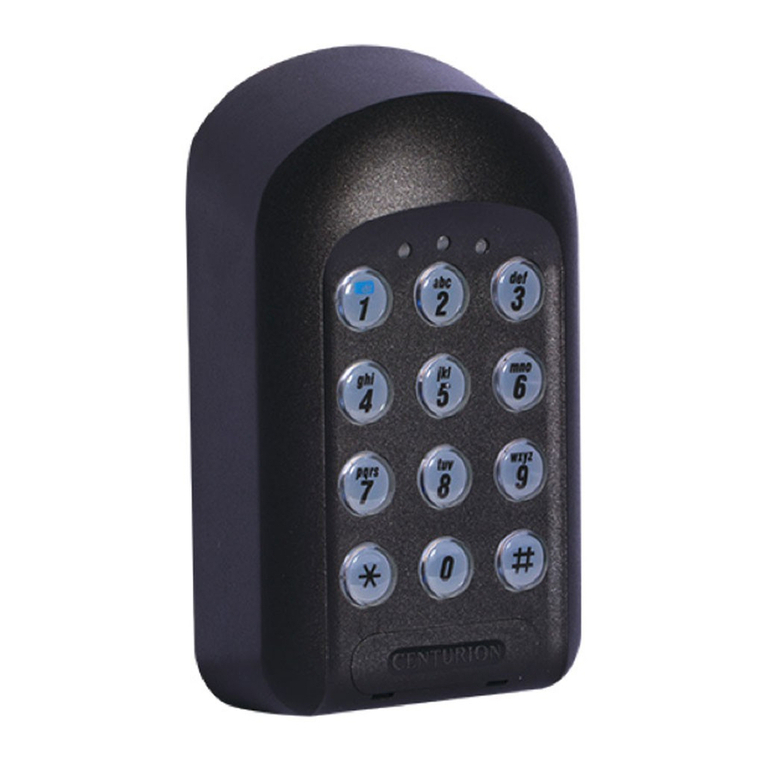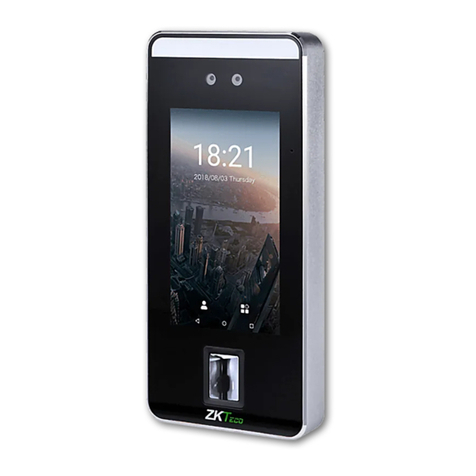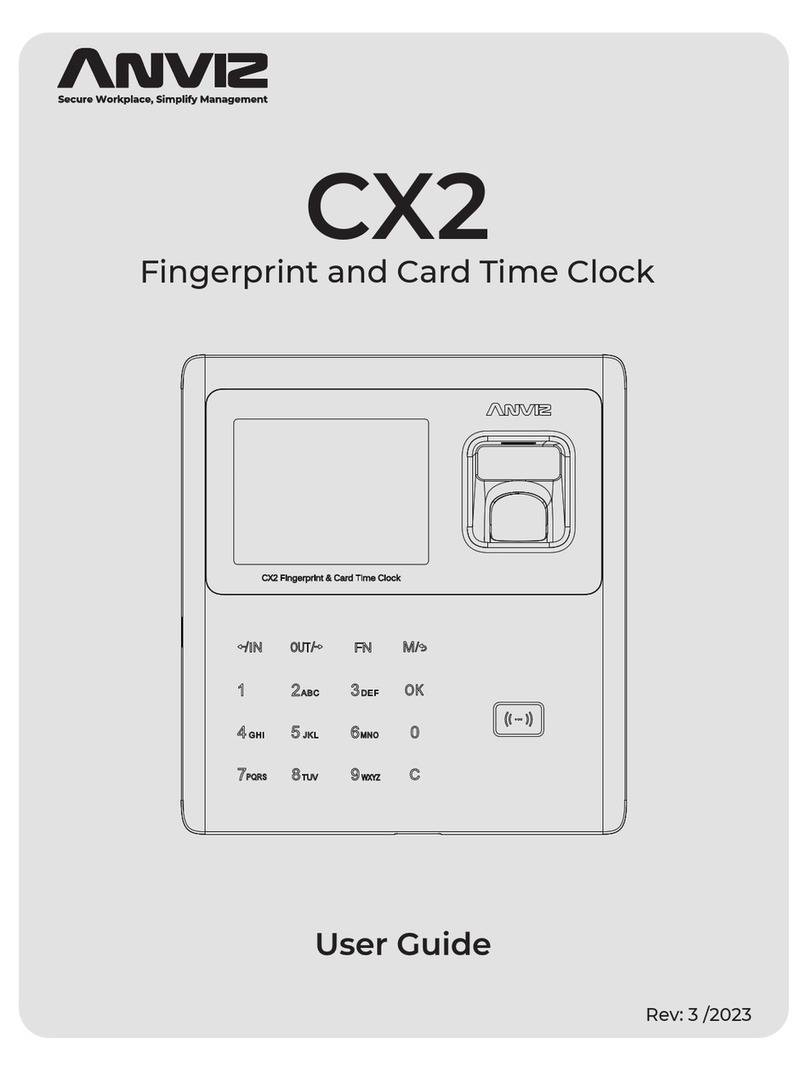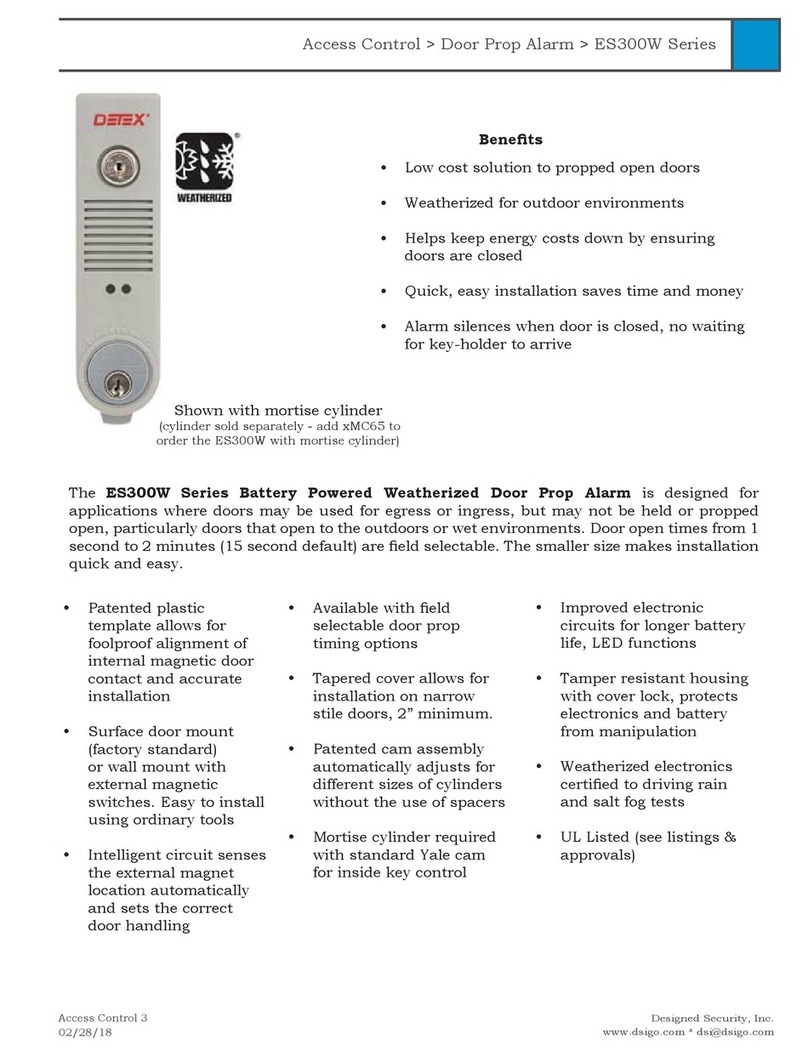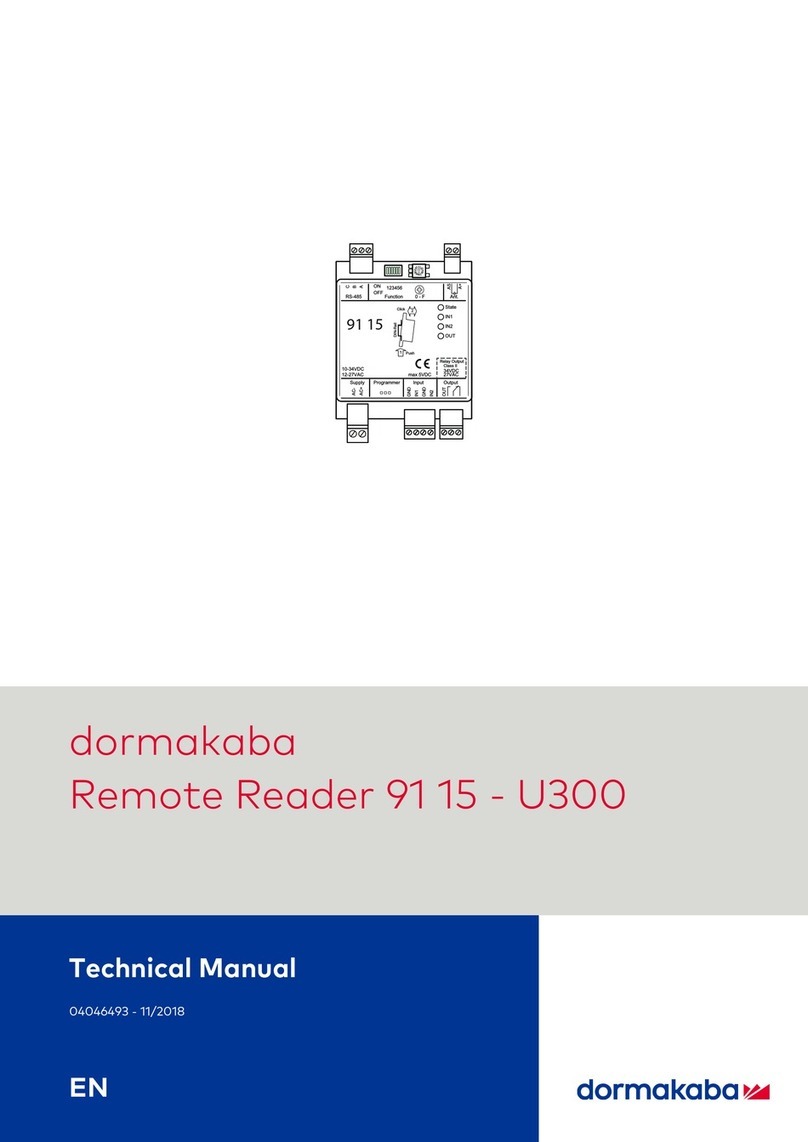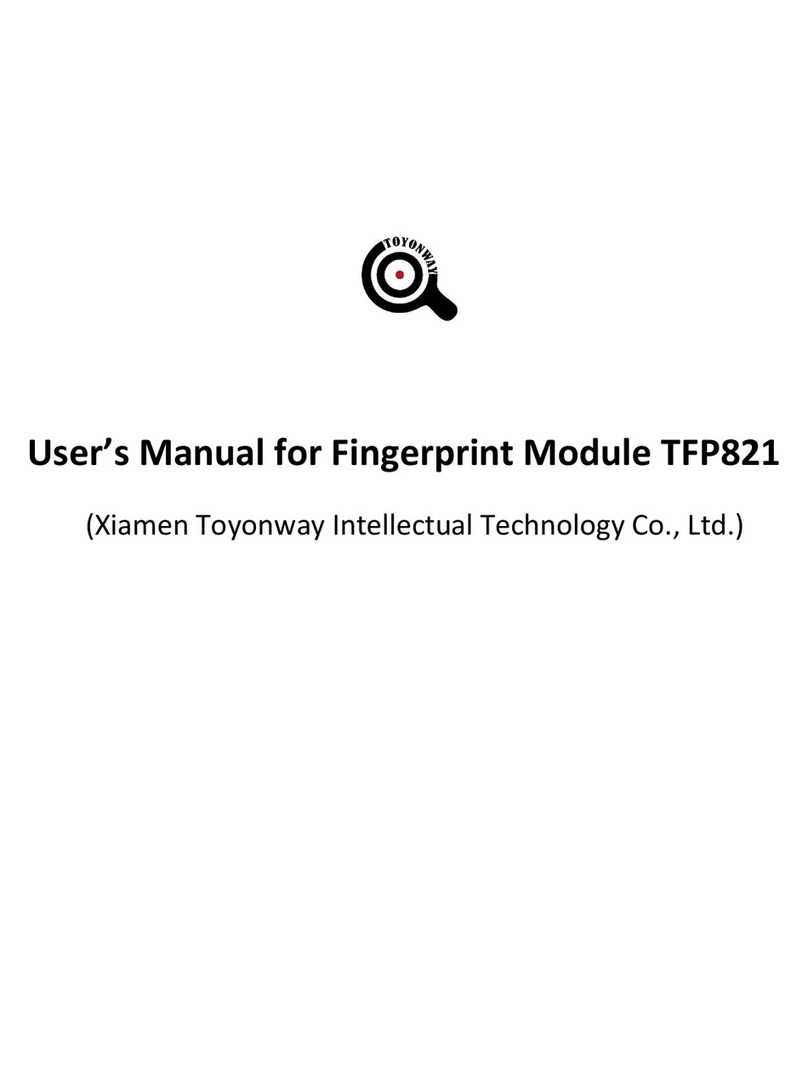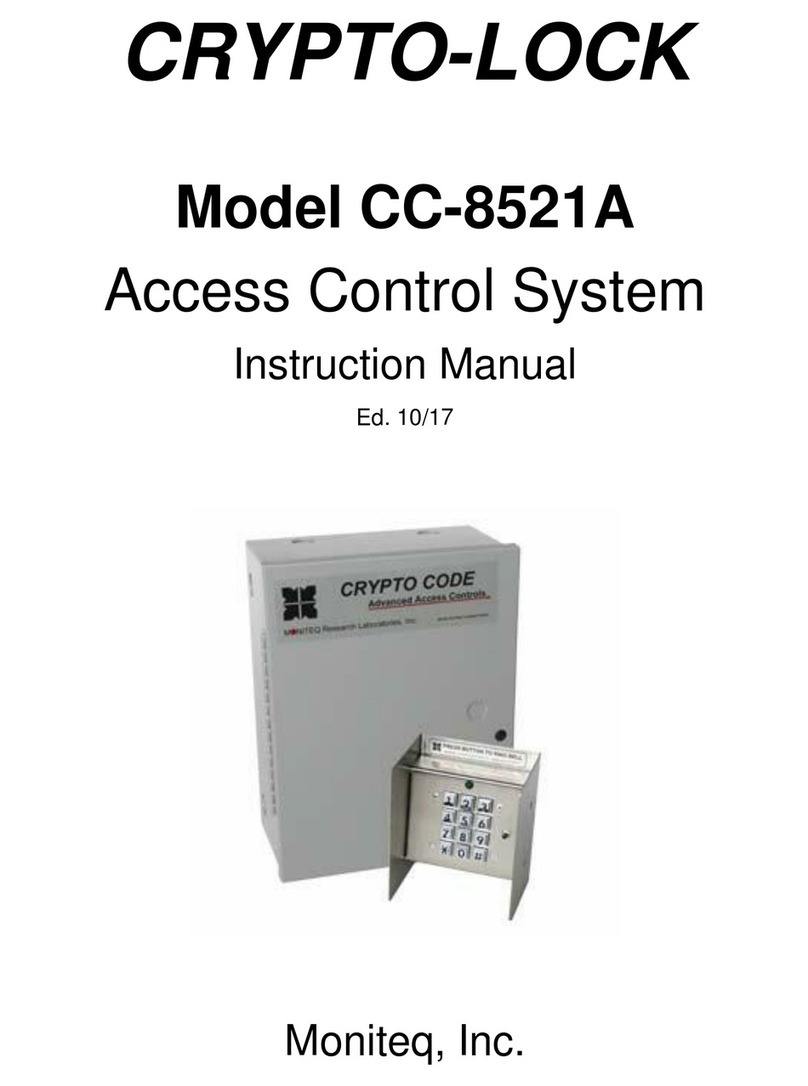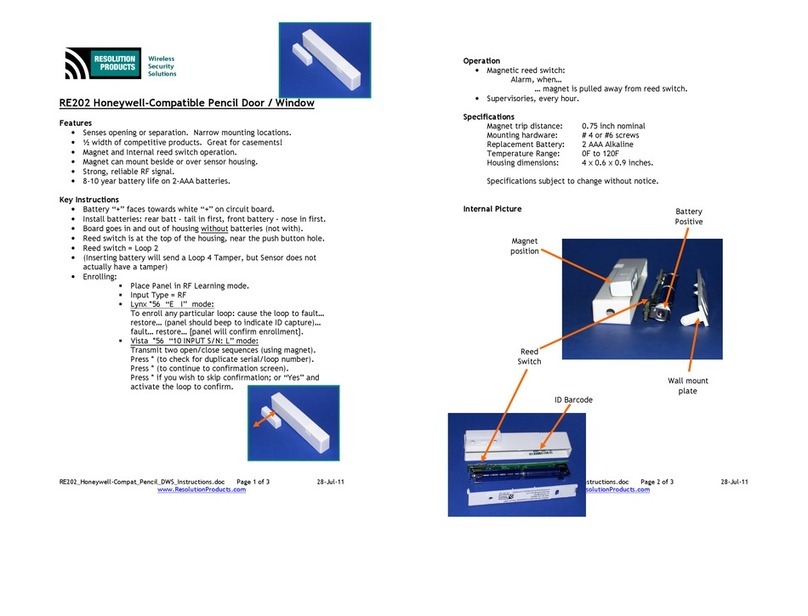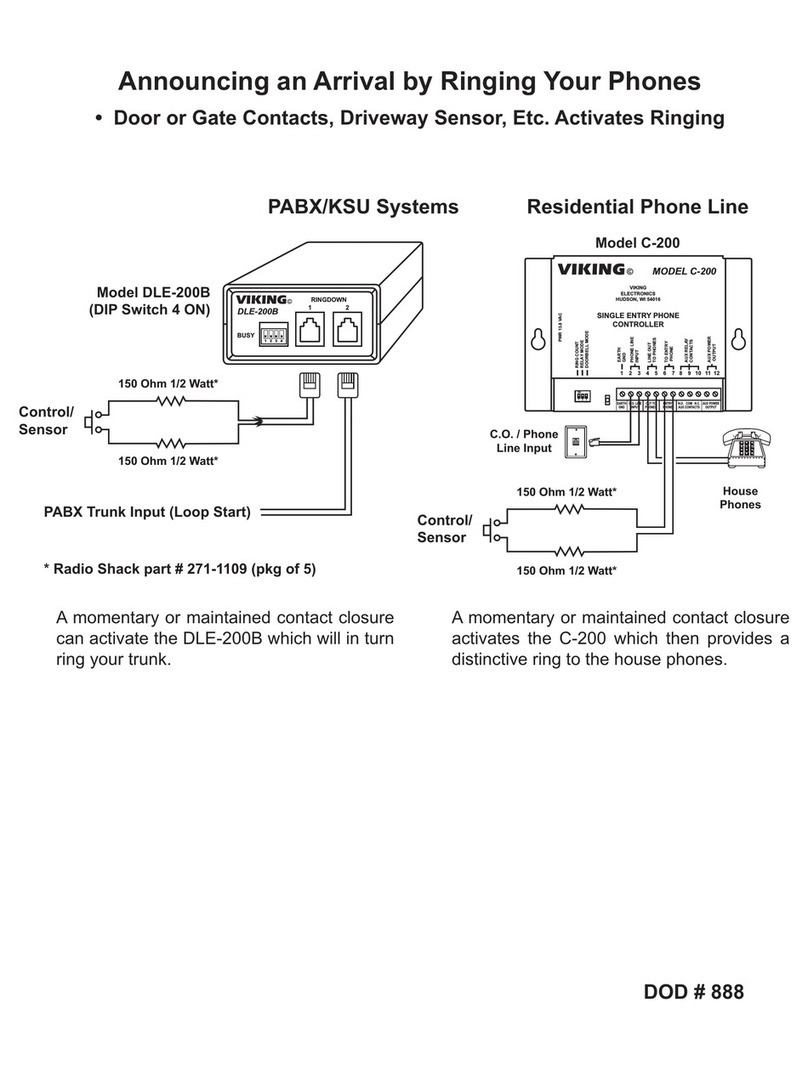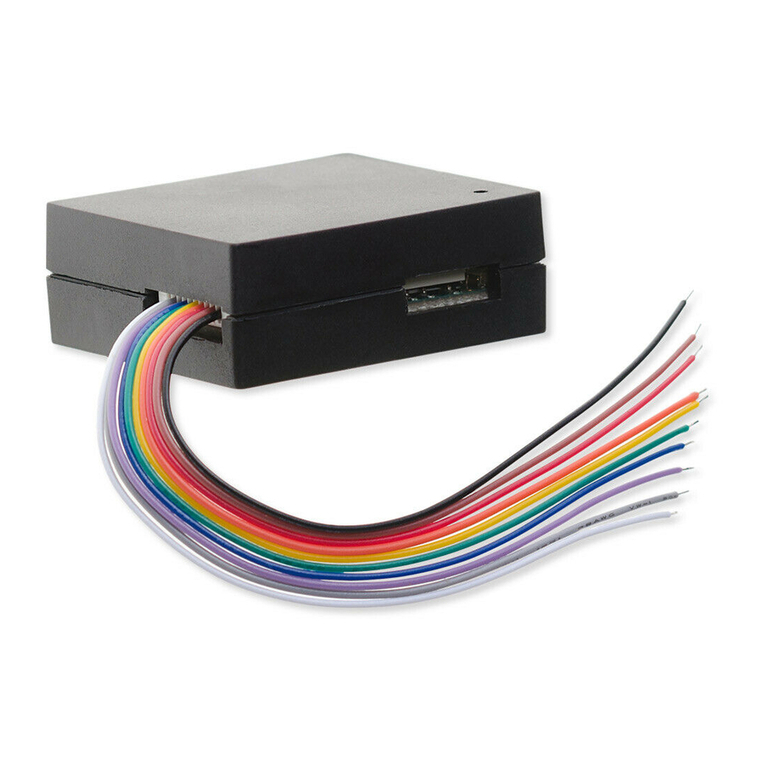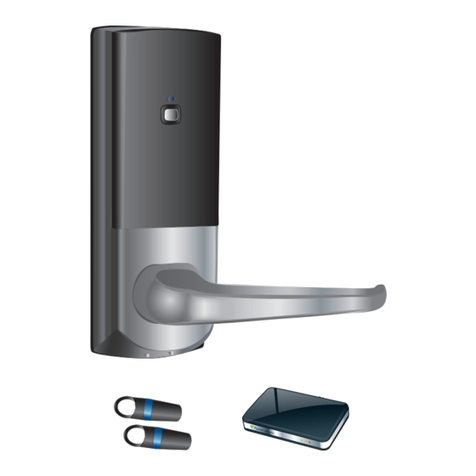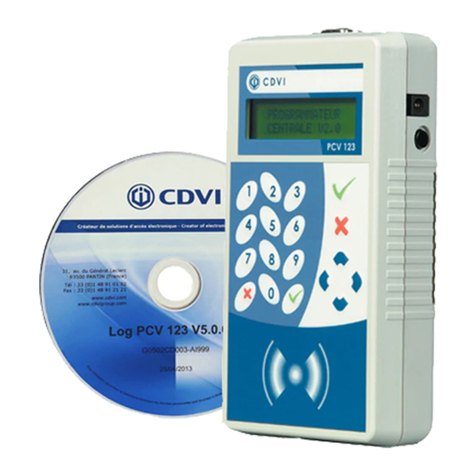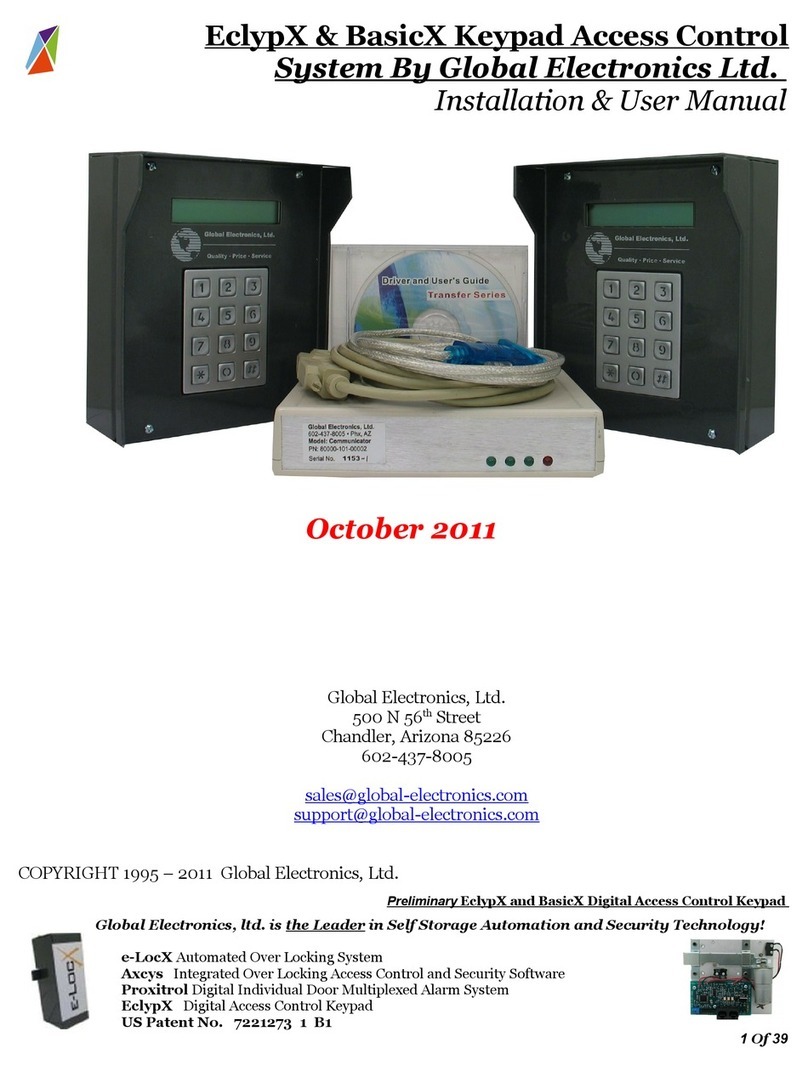Centurion SMART GUARD air User manual

GUARD
OPERATING INSTRUCTIONS
CENTURION
THE AUTOMATIC CHOICE

In a hurry?
0In a hurry?
0
KwikLearn
Adds a new access code at a specified address. The code
will operate the relay output only.
Enter the following keystrokes:
†
1. Enter program mode Master Code
2. Select KwikLearn 0 #
3. Enter user address Address #
4. Enter access code Code #
† Default master code = 1234
Example:
KwikLearn access code 93245 into address 25.
(Master code = 1234)
Enter program mode 1 2 3 4
Select KwikLearn 0 #
Enter user address 2 5 #
Enter access code 9 3 2 4 5 #
The following KwikLearn procedure and connection
diagram will enable you to start using your SmartGUARD
system right away.
Additional procedures are explained later in this manual.
INDICATOR LED's
INDICATOR LED's

TO OTHER
EQUIPMENT
RESISTOR
+
_
Quick Reference Connection Diagram:
123456 789
12V AC
220V AC
(OUTPUT 1)
DOOR
STRIKE
FREE EXIT
POWER SUPPLY
12 - 24V DC/AC
IMPORTANT
IF YOUR SUPPLY VOLTAGE TO THE
SMART GUARD EXCEEDS 24V AC OR
30V DC, FIT THE SUPPLIED 150R
RESISTOR IN SERIES WITH THE
SUPPLY WIRE AS SHOWN.
DO NOT USE THIS PRODUCT WITH
SUPPLY VOLTAGES GREATER THAN
30V AC OR 40V DC.

© Centurion Systems (Pty) Ltd 2003
Document Ref: 1029.D.01.0001_3
Last Revised 29.11.2004
The procedures in this manual require the user to perform
certain sequential actions on the keypad. To assist you, the
combined state of the three LED indicators on the keypad
corresponds with particular steps within a procedure.
When carrying out the procedures, please be aware of the
following:
#
[ ]
Indicates a lit LED
Indicates optional entries
The factory default master code (1 2 3 4) is used throughout this
manual as an example only. Refer to page 5 for instructions on
how to change the master code.
Indicates a particular key to be pressed
on the keypad by the user.
How to Follow the Procedures
!If you intend using the DURESS security parameter (Page
16), ensure that no consecutive numbers are assigned as
codes.
!Ensure that the desired code has not been allocated already.
IMPORTANT WHEN CHOOSING
AN ACCESS CODE NUMBER

Table of contents
Overview ...............................2
Specifications:...........................4
Changing the Master Code . . . . . . . . . . . . . . . . . 5
Addinganewuser:.......................6
Deletingauser:..........................8
Setting the output timers: . . . . . . . . . . . . . . . . . 10
Setting the anti-hack parameters: . . . . . . . . . . . 12
Setting the key wipeout timer:. . . . . . . . . . . . . . 14
Setting the security parameters: . . . . . . . . . . . . 16
Backinguptheunit: .....................19
Restoringtheunit:.......................20
Defaultingtheunit: ......................21
Defaulting the Master Code: . . . . . . . . . . . . 21
Defaulting the System Parameters: . . . . . . . 21
Typical mounting instructions: . . . . . . . . . . . . . 22
Fitting the optional anti-tamper switch . . . . . . . 24
Typical connection diagram: . . . . . . . . . . . . . . . 25
Glossary...............................26
Installation Information . . . . . . . . . . . . . . . . . . . 27
1

2
The Centurion SmartGUARD is a durable, quality keypad
designed to provide high security access control to restricted
areas. The unit is weatherproof, and the keys are backlit for
ease of use at night. Access is granted by the keying in of a valid
access code. The access code can vary from one to ten digits.
Up to one thousand different access codes can be stored within
the unit's non-volatile memory. New codes can be added, and
existing codes deleted as required. "Token" codes can be
added, allowing only a preset number of activations, after which
the code becomes invalid. Each code can operate one or more
of the three available outputs. The first output is a potential free
relay contact capable of switching up to 3A at 50V. Both
normally closed and normally open contacts are available. The
second and third outputs are open collector channels, capable
of directly switching any negative triggered equipment, or an
external relay. The output channels can be set as pulsed or
latching, with pulse times adjustable in one second increments
between one second and four minutes. The open collector
output channels can be used with the optional CP105 Smart
Switch, allowing secure control of equipment a distance away
from the main unit. An anti-hack feature can be enabled,
causing the unit to shut down after a pre-selected number of
incorrect codes have been entered. The unit will then reset after
a pre-selected time. A telltale LED will indicate that the anti-
hack feature has been triggered. The third output channel can
Overview

3
be used as an alarm channel, triggered by various panic or
alarm conditions. The relay output can be activated by an
external pushbutton, giving free exit capability. Once
programmed, the system can be backed up onto the optional
CP108 backup module. This allows the system to be easily
restored if required. An optional independent tamper switch
can be fitted to provide a contact indicating if the unit has been
forced open, or removed from its mountings.

4
Physical:
Supply voltage: 12V-24V AC/DC
Standby current: 32mA 1
Maximum current: 180mA
Operating temperature: -15C to +55C
2
Operating humidity: 0-90% 3
Output relay rating: 1 x 3A @ 50V
Open collector rating: 2 x 50mA @ 24V
Housing material: Polycarbonate
Degree of protection: IP55
Functional:
Code length: 1-10 Digits
Memory capacity: 1000 unique non-volatile codes
Memory retention: >200 years
Output pulse range: 1-255s adjustable, or latched
Token codes: 1- 254 activations
(1) All outputs active, Smart Switches on Ch2 & Ch3.
(2) Non-condensing.
(3) Non-inductive load.
Specifications

5
Changing the Master Code
Replaces the default or currently stored master code with a new
master code. The master code may also be learned by
following the procedure on page 6, Adding a New User.
Notes:
!The master code must always be stored at address 0.
!The master code can be used as a normal access code.
Enter the following keystrokes:
1. Enter Program mode Master Code
2. Select KwikLearn 0#
3. Enter address 0 #
4. Enter new code Code #
Example:
Replace the default master code 1234 with a new master code,
3781
1. Enter Program mode Master Code
2. Select KwikLearn 0#
3. Enter address 0 #
4. Enter new code
INDICATOR LED's
INDICATOR LED's
3781#

6
Adding a new user
1
Adds a new access code at a specified address, assigns
which outputs the code must activate, and how many
accesses are allowed before the code becomes invalid.
Enter the following keystrokes:
1. Enter Program mode Master Code
2. Select Add menu 1 #
3. Enter user address Address #
4. Enter access code Code #
5. Select outputs [Output] # †
6. Assign outputs #
7. Enter access limit [Accesses] # ‡
8. Exit Add menu #
9. Exit Program mode #
† Repeat step 5 for additional outputs.
‡ Repeat steps 3 - 7 for additional users.
Notes:
!If no output is specified, the relay output is selected.
!If the number of access are not specified in step 7, unlimited
access is set. Care must be taken to ensure the desired access
limit is correctly applied. NB: If unlimited accesses are required,
only enter # at step 7.
Example:
Add access code 527 into address 10. Code must operate
INDICATOR LED's

7
output 2. Code is valid forever. (Master code = 1234)
Enter Program mode 1 2 3 4
Select Add menu 1 #
Enter user address 1 0 #
Enter access code 5 2 7 #
Select outputs 2 #
Assign outputs #
Enter access limit #
Exit Add menu #
Exit Program mode #
Example:
Add access code 93523 into address 10. Code must operate
outputs 1 and 3. Code is valid for 2 uses. (Master code = 1234)
Enter Program mode 1 2 3 4
Select Add menu 1 #
Enter user address 1 0 #
Enter access code 9 3 5 2 3 #
Select outputs 1 # 3 #
Assign Outputs #
Enter access limit 2 #
Exit Add menu #
Exit Program mode #
INDICATOR LED's
INDICATOR LED's

8
2
Deletes an access code at a specified address.
Enter the following keystrokes:
1. Enter program mode Master Code
2. Select Delete menu 2 #
3. Enter user address Address # †
4. Exit Delete menu #
5. Exit Program mode #
† Repeat step 3 to delete additional user codes.
Note:
If Address is specified as 0, all access codes will be deleted,
and the master code will revert to 1234.
Example:
Delete access code at address 99. (Master code = 1234)
Enter Program mode 1 2 3 4
Select Delete menu 2 #
Enter user address 9 9 #
Exit Delete menu #
Exit Program mode #
Deleting a user
INDICATOR LED's
INDICATOR LED's

9
Example:
Delete all access codes. (Master code = 1234)
Enter Program mode 1 2 3 4
Select Delete menu 2 #
Enter user address 0 #
Exit Delete menu #
Exit Program mode #
Example:
Delete access code at address 54 and 87. (Master code =
1234)
Enter Program mode 1 2 3 4
Select Delete menu 2 #
Enter user address 5 4 #
Enter user address 8 7 #
Exit Delete menu #
Exit Program mode #
INDICATOR LED's
INDICATOR LED's

Sets the output pulse time of the output channels. Default
setting is 1 second pulse.
Enter the following keystrokes:
1. Enter Program mode Master Code
2. Select Output menu 3 #
3. Enter Output channel Channel #
4. Enter pulse time Seconds # †
5. Exit Output menu #
6. Exit Program mode #
† Repeat step 3 & 4 for additional channels.
Notes:
!A pulse time of 0 seconds will give a latched output.
!Maximum pulse time is 255 seconds.
Example:
Set Output 1 to a 1 second pulsed output.
(Master code = 1234)
Enter Program mode 1 2 3 4
Select Output menu 3 #
Enter Output channel 1 #
3
10
Setting the output timers
INDICATOR LED's
INDICATOR LED's

11
Enter pulse time 1 #
Exit Output menu #
Exit Program mode #
Example:
Set Output 1 to latch, Output 2 to 5s pulse, and Output 3 to
1s pulse. (Master code = 1234)
Enter Program mode 1 2 3 4
Select Output menu 3 #
Enter Output channel 1 #
Enter pulse time 0 #
Enter Output channel 2 #
Enter pulse time 5 #
Enter Output channel 3 #
Enter pulse time 1 #
Exit Output menu #
Exit Program mode #
INDICATOR LED's

4
12
Sets the number of wrong access codes the unit will accept
before becoming inactive, and the time for which the unit will
remain inactive. Default number of wrong codes = 3. Default
reset time = 60 seconds.
Enter the following keystrokes:
1. Enter Program mode Master Code
2. Select Lockout menu 4 #
3. Enter No. of codes Wrong Codes #
4. Enter Reset time Seconds #
5. Exit Program mode #
Notes:
!If the Number of wrong codes is set to 0, the unit will
accept an unlimited number of wrong codes.
!If the Reset time is set to 0, the unit can only be reset by
removing the power.
Example:
Set Wrong Code Alarm to activate after 5 incorrect codes
have been entered. Unit must reactivate after 30 seconds.
(Master code = 1234)
Enter Program mode 1 2 3 4
Setting the anti-hack parameters
INDICATOR LED's
INDICATOR LED's

13
Select Lockout menu 4 #
Enter No. Of codes 5 #
Enter Reset time 3 0 #
Exit Program mode #
Example:
Disable the Wrong Codes alarm feature.
(Master code = 1234)
Enter Program mode 1 2 3 4
Select Lockout menu 4 #
Enter No. Of codes 0 #
Enter Reset time 1 #
Exit Program mode #
INDICATOR LED's

5
14
Sets the number of seconds for which keystrokes remain valid.
This ensures that if a partial code has been entered, it is wiped
out of the keypad buffer after a preset time, and must be re-
entered in its entirety. The clearing of the keypad buffer is
indicated by the keypad back light changing from bright (active)
to dim (standby). Default wipeout timer = 15 seconds.
Enter the following keystrokes:
1. Enter Program mode Master Code
2. Select Wipeout menu 5 #
3. Enter Wipeout time Seconds #
4. Exit Program mode #
Notes:
!If the Wipeout time is set to 0, key wipeout will be disabled.
IMPORTANT
Disabling the key wipeout timer will:
!Compromise the security of the system.
!Cause a code entry to be incorrectly recognised as a
WRONG CODE if an incomplete code was previously
entered.
!If key wipeout is disabled, the keypad back light will remain
in bright mode.
Setting the key wipeout timer
INDICATOR LED's

15
Example:
Set the Key wipeout time to 15 seconds.
(Master code = 1234)
Enter Program mode 1 2 3 4
Select Wipeout menu 5 #
Enter Wipeout time 1 5 #
Exit Program mode #
Example:
Disable the key wipeout time:
(Master code = 1234)
Enter Program mode 1 2 3 4
Select Wipeout menu 5 #
Enter Wipeout time 0 #
Exit Program mode #
INDICATOR LED's
INDICATOR LED's

6
16
Sets the conditions under which the Alarm channel (Output 3)
will activate. Also sets the anti-default and tone mute features.
The following alarm conditions can be set:
Duress (Code + 1)(Default = off):
Adding 1 to the last digit of an access code activates the unit as
normal, but also activates the alarm channel. This is used if
entering under duress. E.g. Access code is 1234: Entering
1235 gives access, but also activates the alarm channel.
Alarm ( + #)(Default = off):
Pressing the and # keys simultaneously activates the
alarm channel.
Wrong codes (Default = off):
When the number of wrong codes is exceeded, the alarm
channel is activated.
Anti Default feature (Default = off):
Setting this feature prevents the master code and system
parameters from being reset by the defaulting features.
Tone Mute feature (Default = off):
Setting this feature turns off the audible feedback when
Setting the security parameters
Other manuals for SMART GUARD air
3
Table of contents
Other Centurion IP Access Controllers manuals
Popular IP Access Controllers manuals by other brands
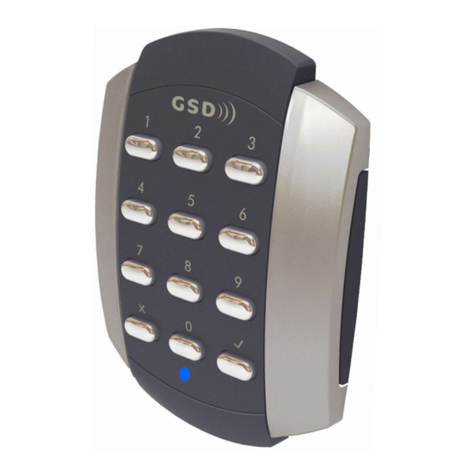
GSD
GSD Digital Keypad Installation & user manual
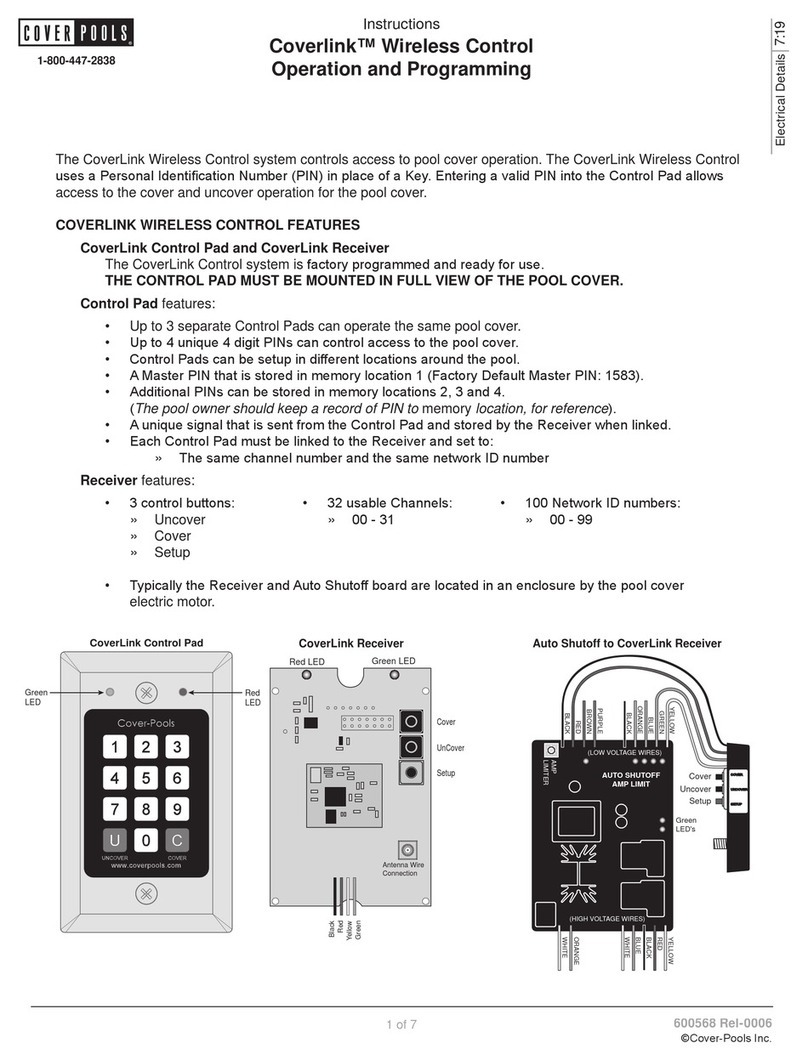
Cover Pools
Cover Pools Coverlink Wireless Control instructions
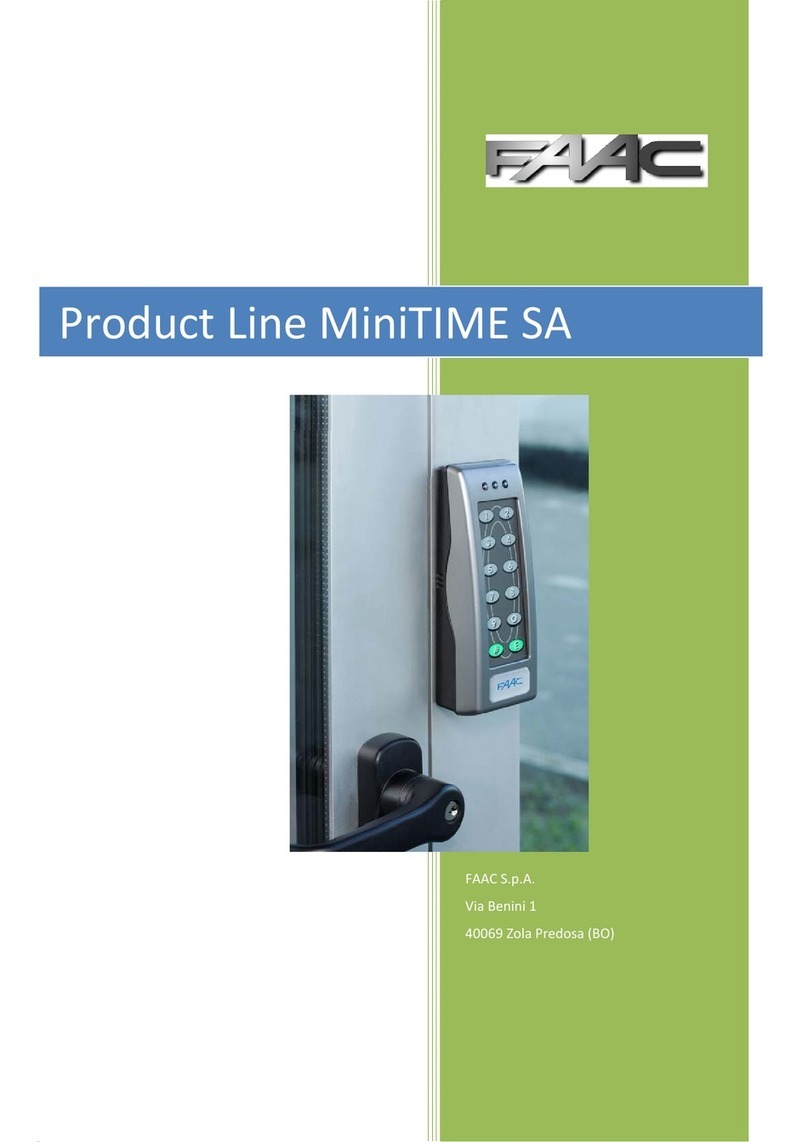
FAAC
FAAC MiniTIME SA Installation guide and user guide
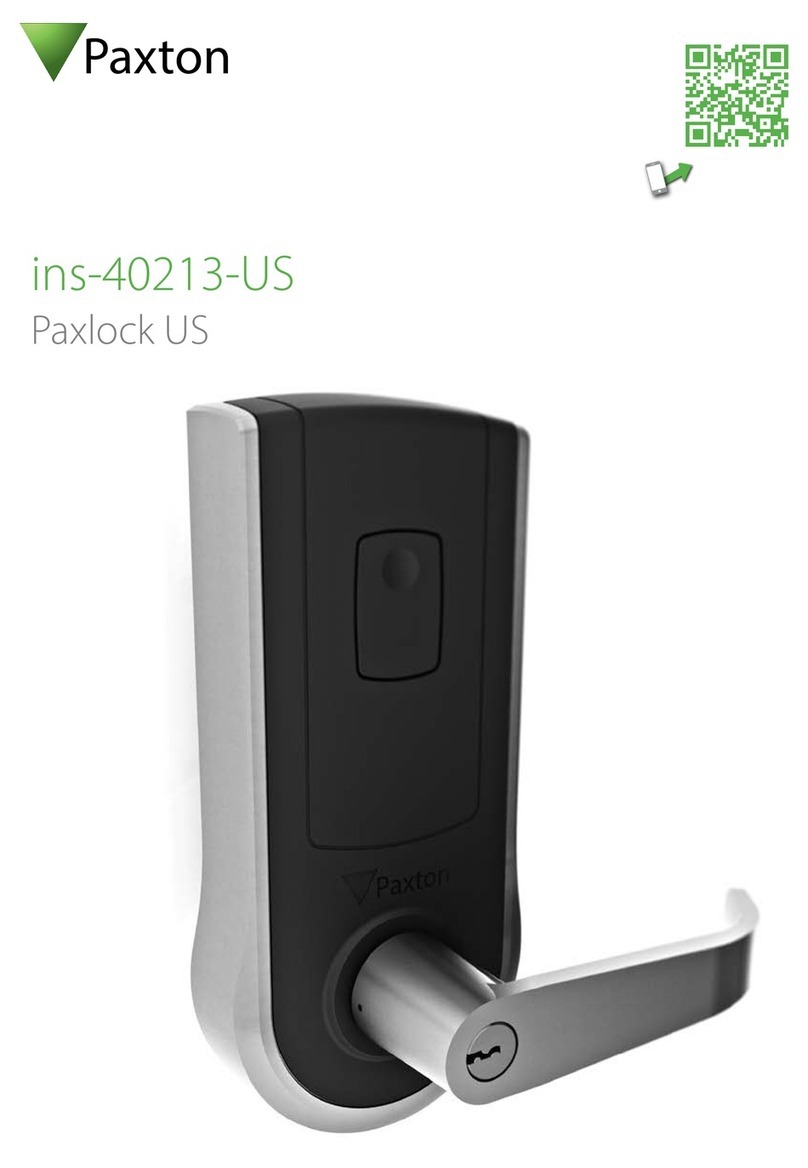
Paxton
Paxton ins-40213-US user manual
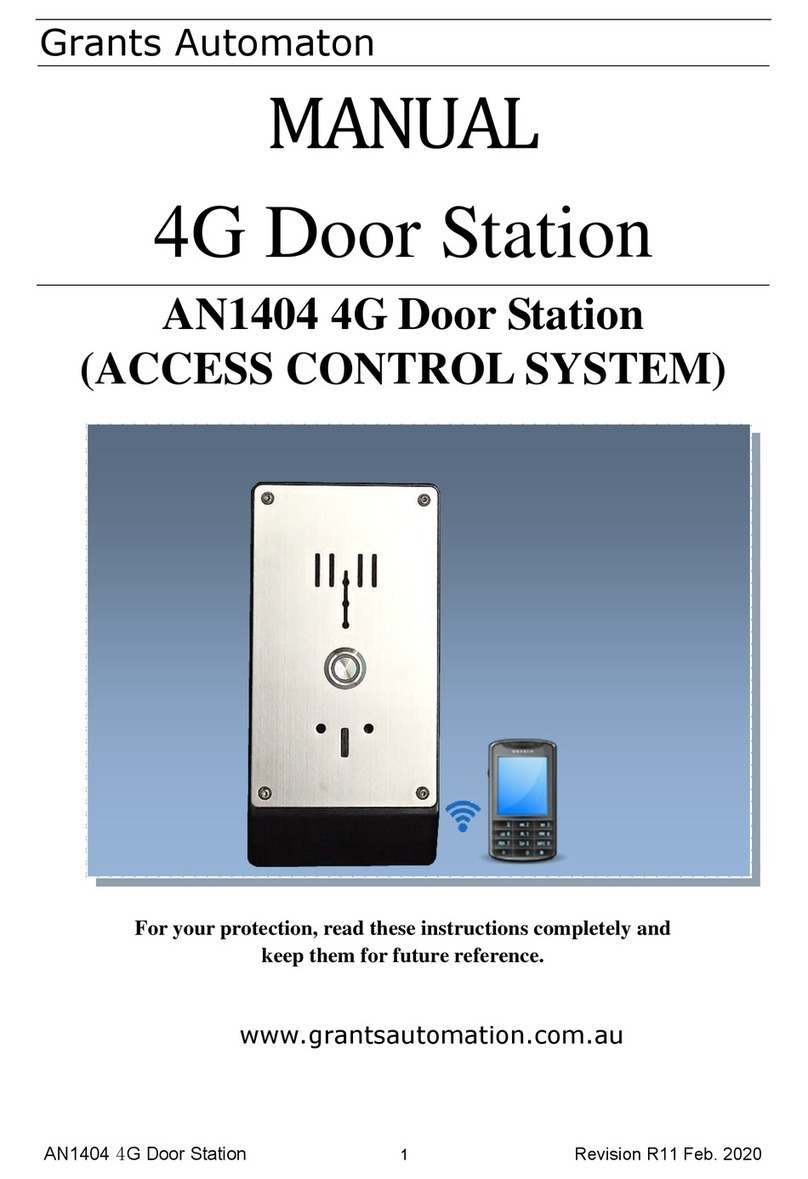
Grants Automaton
Grants Automaton AN1404 manual
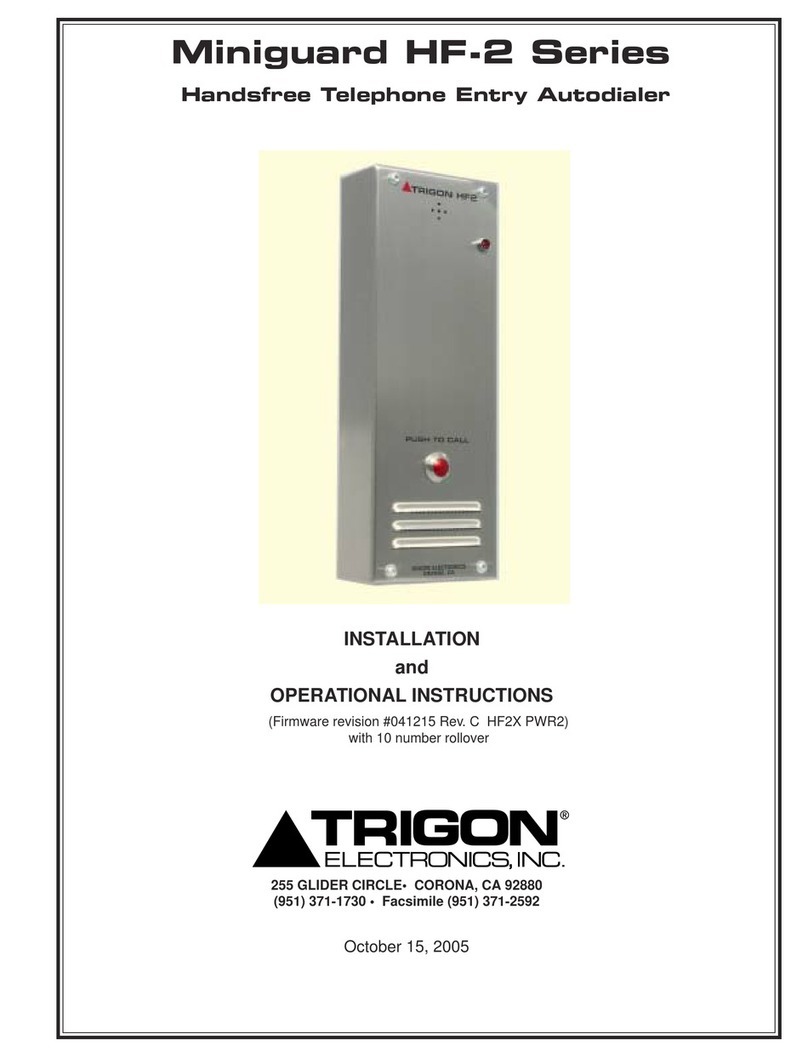
Trigon
Trigon Miniguard HF-2 Series Installation and operational instructions
